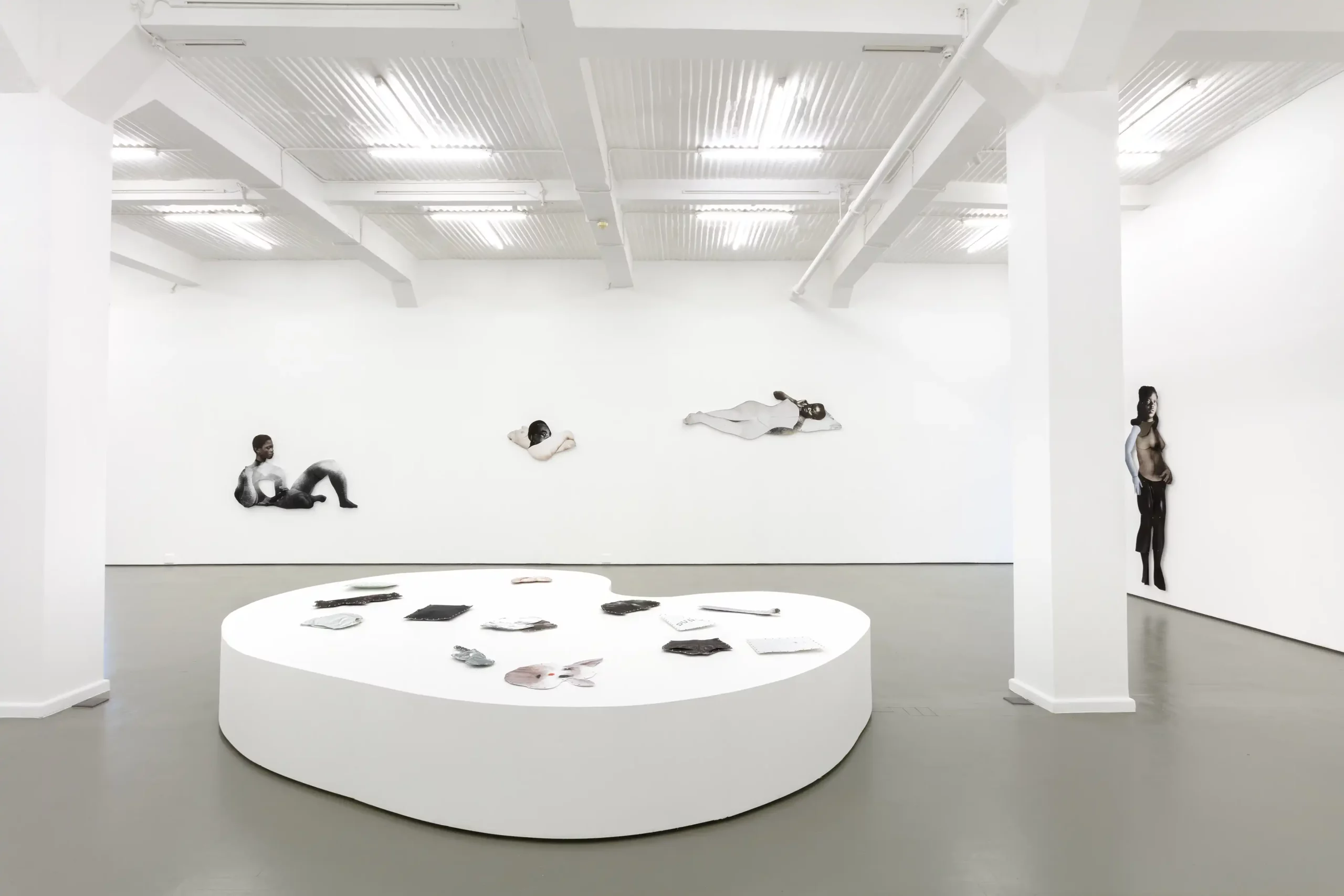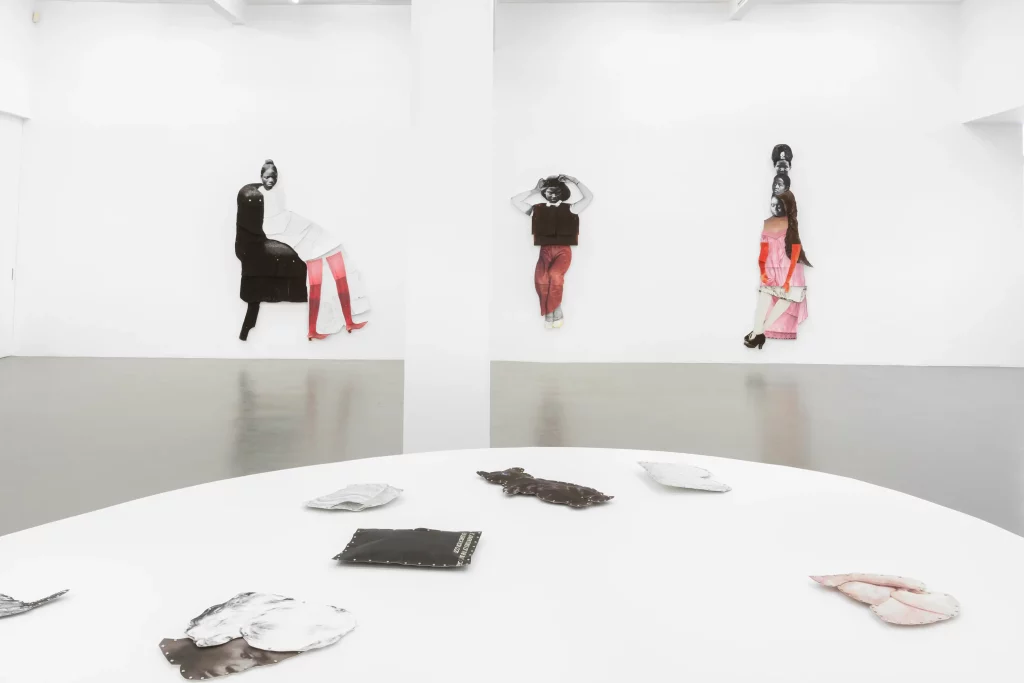«We’ve seen debates about contemporary art and artists in places such as Oceana, South America, and China are increasingly coming to light», connecting the Global South through art
The Stevenson Gallery
The Stevenson Gallery is an international contemporary gallery founded in 2003, with spaces in Cape Town, Johannesburg, and recently, Amsterdam. Visitors can find a focus on local work; however, the gallery has been a hallmark of international talent in the southern part of the African continent. Stevenson publishes extensive catalogs and regularly participates in international art fairs, such as Art Basel, Art Basel Miami Beach, and Frieze.
Redefining the Idea of Region – Stevenson Gallery
Sinazo Chiya is one of the thirteen partners representing Stevenson’s collective partnership model. Speaking of what can be found inside the gallery, Chiya described it as a «fruit salad, with a particular emphasis on the region, but not limited to South Africa or Africa, or even the global south. We’ve seen a lot of debates about contemporary art conversation about contemporary artists in places such as Oceana, South America, and China are increasingly coming to light». Chiya explained that a more significant part of the story of «Southerness» pertains to regions and conversations across the Atlantic and Indian oceans, which Stevenson gallery considers «region concerns».
«The kind of work that we present to artists and the public have a direct and personal connection to this part of the world, and they have a story to tell about their experiences, universal experiences, about the non-material matter». For Stevenson, it’s a fruit salad that combines all of the elements together but is held together by the fact that their part of the world gathers a central concern of these topics.
Stevenson Gallery: curating culture for education
The Stevenson Gallery curates pieces and artists that appeal to those willing to look at what they’re trying to convey. Curating the works inside each gallery is done to ensure they cover the desired topics with respect and precision.
Speaking of the artists, Chiya explained that there is one particular artist who tackles the issues of Western mythologies «because of his experience as an African-born, white South African man, that’s how he uses the lens, as a way to talk about the experiences of this country through his point of view».
Currently, Stevenson has an exhibition with South African-born but France-based visual and performance artist Steven Cohen. Chiya explained that Cohen grew up as a white Jewish man in France and looks at queerness from a more considerable uptake as a political body, as a political agent.
«There are traditional sculptures, paintings, no drawing, but there are also ceramicists, performance artists, installation artists, and people who do ethereal works that don’t last beyond that specific exhibition, there’s a bit of everything». She brought up artist Mawande Ka Zenzile, who uses lineage as a way of discussing the world in a universal sense through political and social issues, such as racism, capitalism, and colonialism, in his works. One can stumble upon ceramics by Zambian-born artist Hylton Nel to paintings using watercolors and drawings; the Stevenson appeases multiple tastes.
A post-colonial world
The world has become more aware of topics of postcolonial realities thanks to globalization and current events, such as the passing of Queen Elizabeth, reopening the wombs of colonialism eras.
Regional art has been used to construct a vision of a post-colonial world. Chiya described regional art for her as «post-colonial and historically aware. All the artists, whether they’re formalists and how they approach things, to conceptualists – everyone is aware». South Africa is one of the regions in the world that, in particular, is marked by the colonial experience due to its history. «That’s something all the artists play with, or sometimes not as an anti-play move. Everyone understands the context of these indelible ties to history and whether that’s something present in the works or not».
Michael Stevenson and the difference between Cape Town and Johannesburg
The Stevenson Gallery was founded two decades ago by Michael Stevenson as the Michael Stevenson Fine Art Gallery. Eventually, Stevenson collaborated with other co-founders and realized that he could create platforms for contexts that didn’t have an outlet and create a consistent space for expressing ideas.
Eventually, as more collaborators, co-owners, and ideas began flowing around, the dynamics shifted, allowing a more unified identity to become Stevenson. Then came the debate about the locations. For those who have yet to visit South Africa, Chiya described the two major cities of Johannesburg and Cape Town to be different, «you’ll see that aesthetically, energetically, conceptually, even the city’s dispositions are different, the art schools are different, so we had to have a presence in both cities».
The Stevenson Gallery Amsterdam
The Stevenson Gallery Amsterdam is the newest development and came about at the height of the pandemic. As the globe was locked down with travel restrictions, one of the senior partners, who happens to be Dutch, David Brodie, found a space available in a prime location. «Serendipity led one to another. It made a point of contact for people from that side of the world to connect with this audience and for us to be able to connect to audiences beyond the usual fair model. It helped us construct sustainable engagement and to help introduce artists in a way that is sincere and long-lasting, make relationships and bridge gaps».
By opening the new space in Europe, Stevenson created profound connections, bringing South Africa to Europe and vice versa. When explaining how they bridged the gap, «now we don’t have to make it feel like an African adventure, but to really plant our feet there to have real engagements». Placing the gallery in Amsterdam was a strategic location. The partners followed curiosity that was already embedded within the European communities.
Free curating at Stevenson Gallery
Within the Stevenson Gallery, there is no specific group that curates, unlike most galleries. Generally, most exhibitions are curated by an individual, but every exhibition is executed hand-in-hand with the artist. «When someone has an idea, they’ll propose it to the floor, propose the artists they want to feature, whether it is an artist that works within or outside the gallery», explained Chiya. It’s an open, welcoming curating process among the partners.
Chiya explained that curation, as an action in itself, is central to how Stevenson conceives the identity of space, «whether that means breaking down walls, putting walls up, filling a space with sand, attempting to fill a space with water». She explained that Stevenson strives for an artists and curation-led exhibition rather than being a marketplace or show idea. Curation is not individualized because, from Stevenson’s point of view, it may distract from the work itself. «We rather let the work speak», explained Chiya.
Globalization and integrating contemporary talents at Stevenson Gallery
Highlighting that the gallery doesn’t make strict lines between what international and local artists are, «internally, we’ve forgotten to see it that way». She explained that they work two to three years in advance, and as they plan their calendars, the partners will see what the specific artist is working on, whether local or international.
Chiya explained that the fellow partners try to make sense of the flow, never forcing events or exhibitions. It all goes one by one by seeing what the work needs and what the audience wants and is taken from there. She continued that it’s also instrumental in helping different audiences build on each other for their artists.
«The juxtaposition plays with those perspectives while helping the local audience. Connecting to artists from India who work in the vernacular like addressing history and making paintings, but also talking about relatable stories so that people can take what they want and learn from it». It’s about synthesizing and synergizing as much as possible, or as Chiya referred to it, «a melting pot». Globalization and integrating contemporary talents from all over the world and coherently presenting them is the Stevenson way.
Stevenson Gallery: an educational center for their communities
One of the most significant ambitions of the Stevenson Gallery is to become an educational center for their communities. Upon glancing on the Stevenson website, e-books and gallery publications are available for free download. When taking stock or trying to make room in their spaces, Stevenson often donates old textbooks or magazines to local places where people lengthen their lifespan and learn from those publications.
«We have openings, art fairs that are free for entry, and we have food trucks outside, things to make the community come closer to the projects so that it, not just art alienating», said Chiya. For Stevenson, a large part of its ethos is to make content accessible and feel natural and help people understand the topics and ideas the artists want to convey.
Upcoming: Stevenson On The Road
Traveling around the various major global art fairs, Stevenson tries to be present at all of them. This year, Stevenson will be at Frieze in London and at Art Basel. For the local South African audiences, Stevenson Gallery will host a cross-country exhibition showing a series of films and works by Sue Williamson, «a crucial figure in South African pictures which we have the privilege of working with». Visitors can find Williamson’s work in the Cape Town Gallery and her paintings in the Johannesburg location.
Stevenson Gallery
Founded in 2003, Stevenson is a contemporary art gallery with locations in Johannesburg, Cape Town, and Amsterdam. The galleries showcase contemporary works from South Africa and regional art in solo and group exhibitions.




















